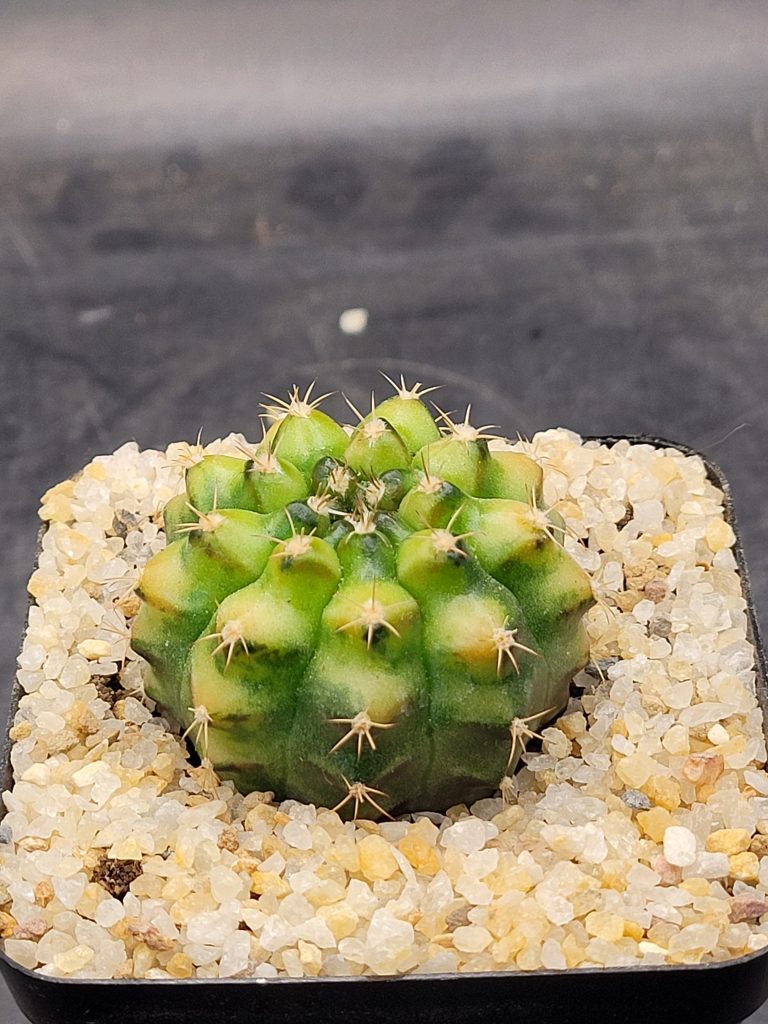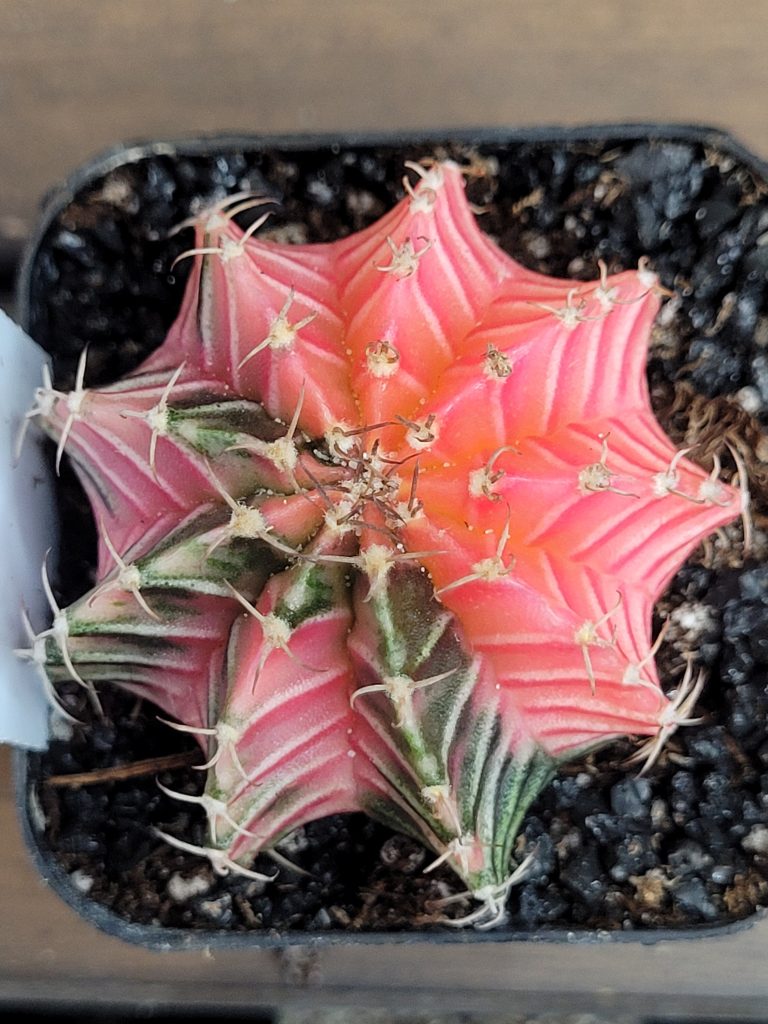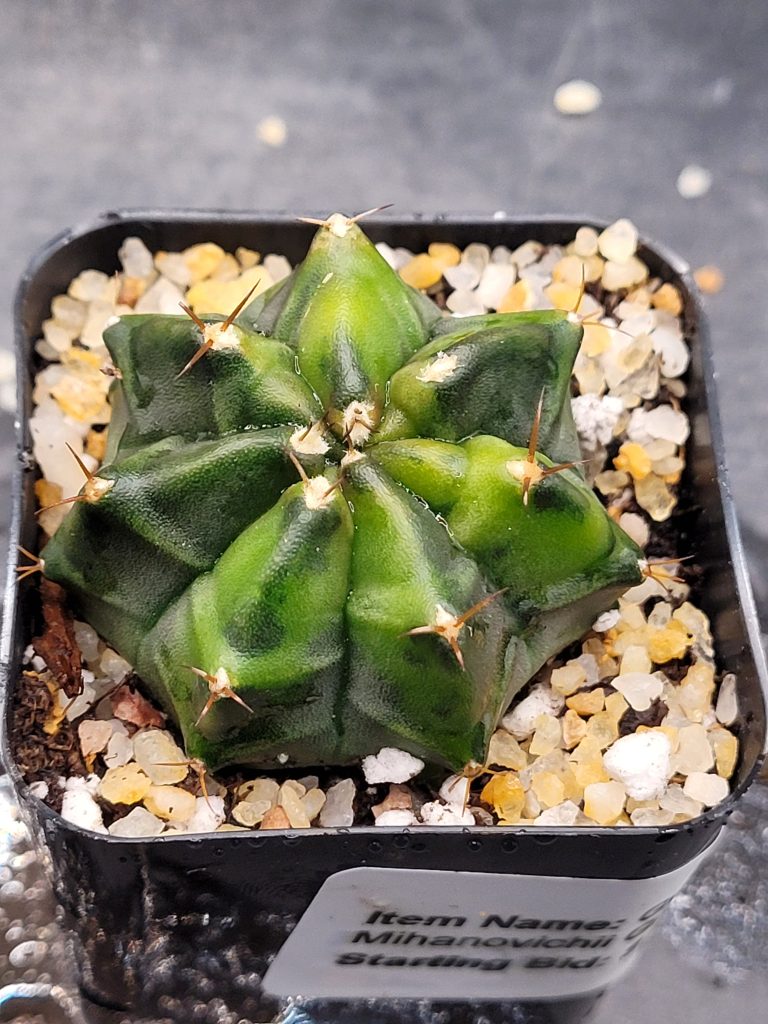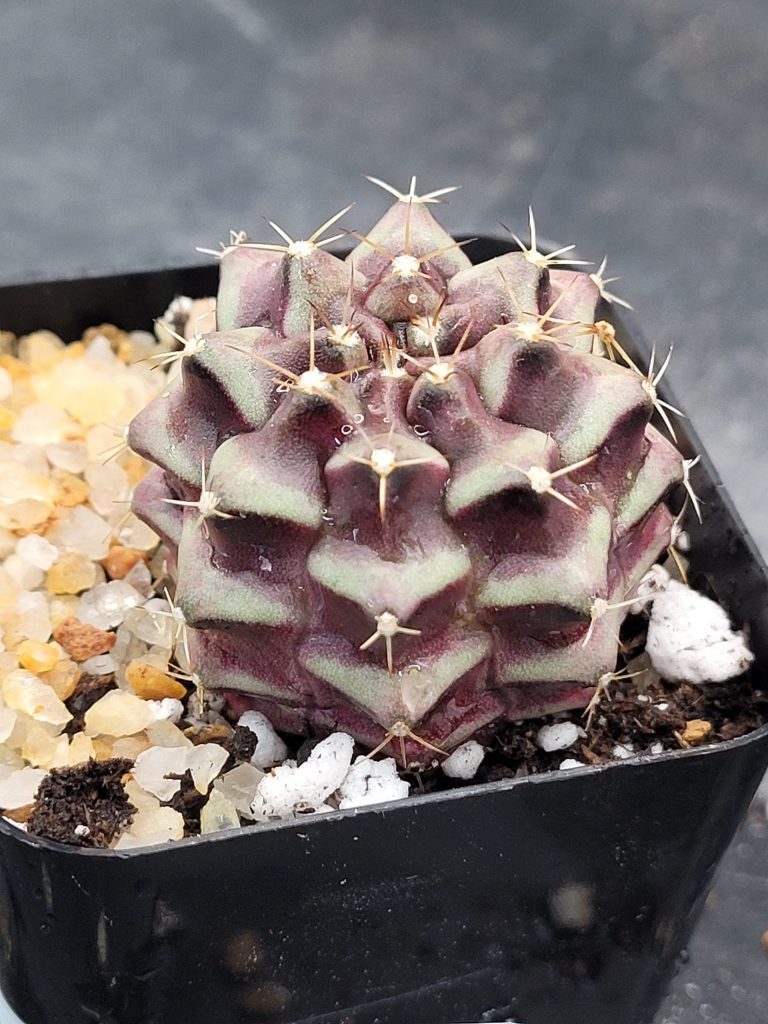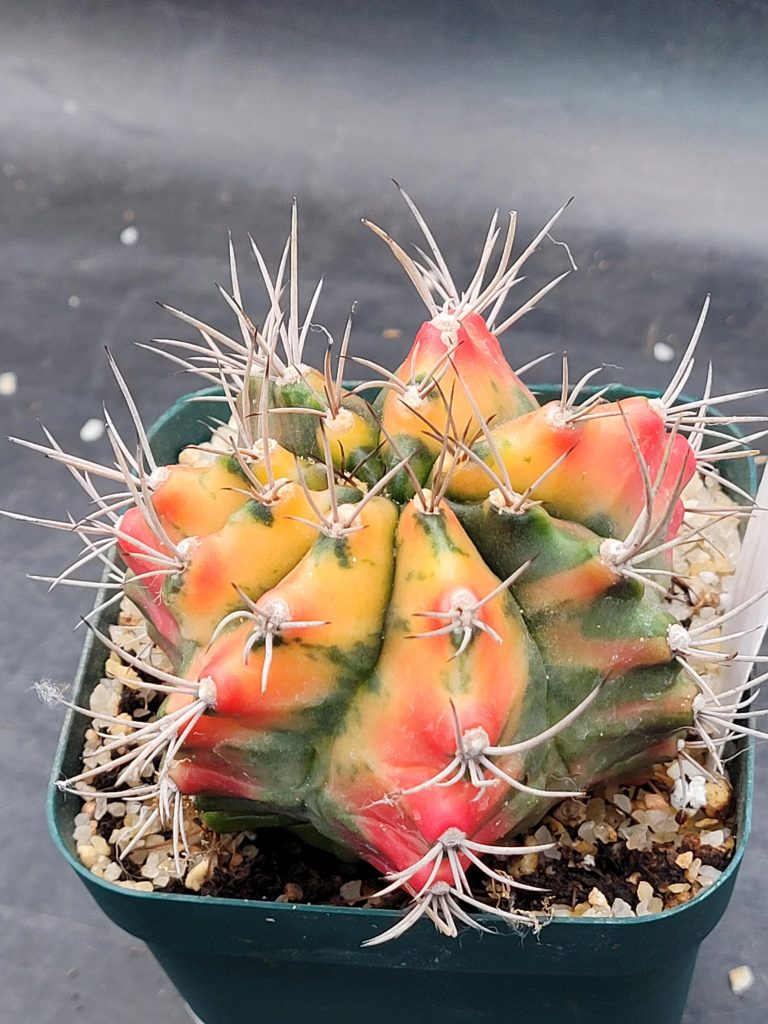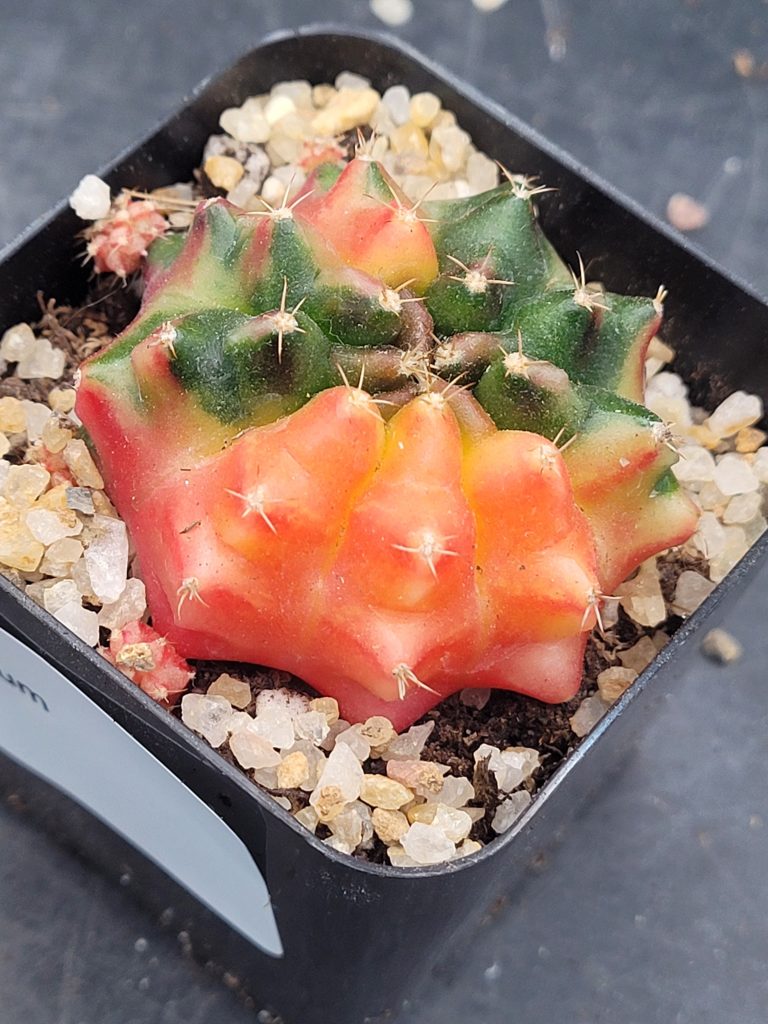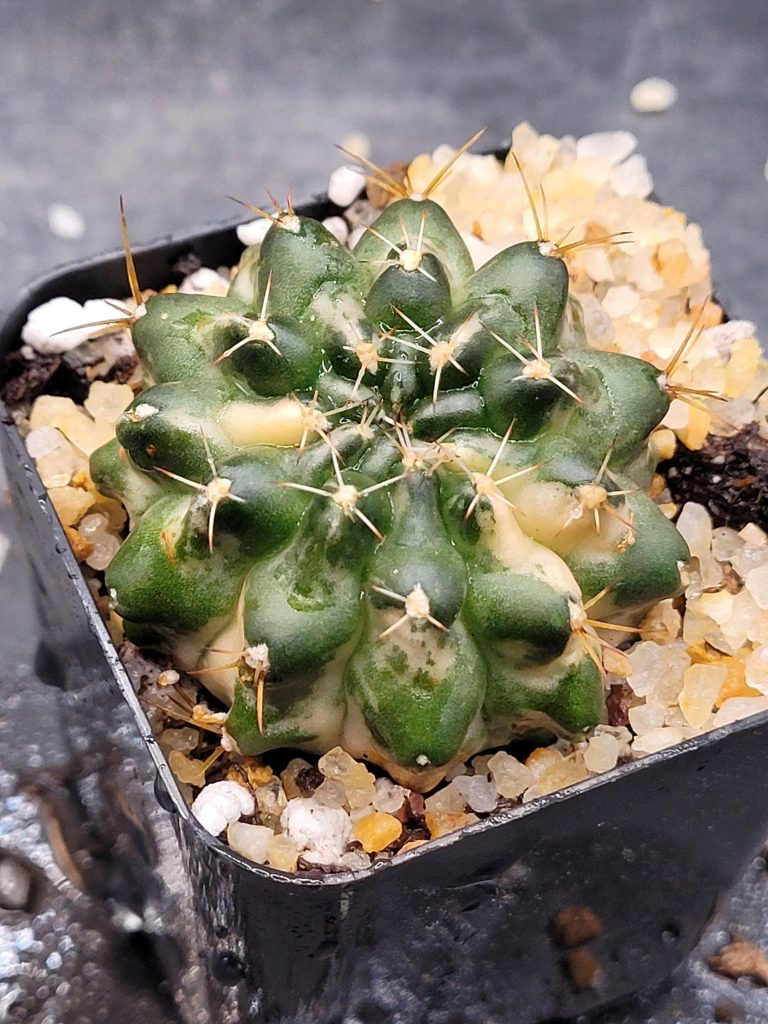The Gymnocalycium mihanovichii ‘Nepali Art Clone’ is an extraordinary and rare cultivar admired for its unique tuberculated form, sculptural ridges, and vibrant green hues. This striking variation of Gymnocalycium stands out due to its clustered, art-like structure, making it a prized specimen for collectors who seek unusual and artistic plants.
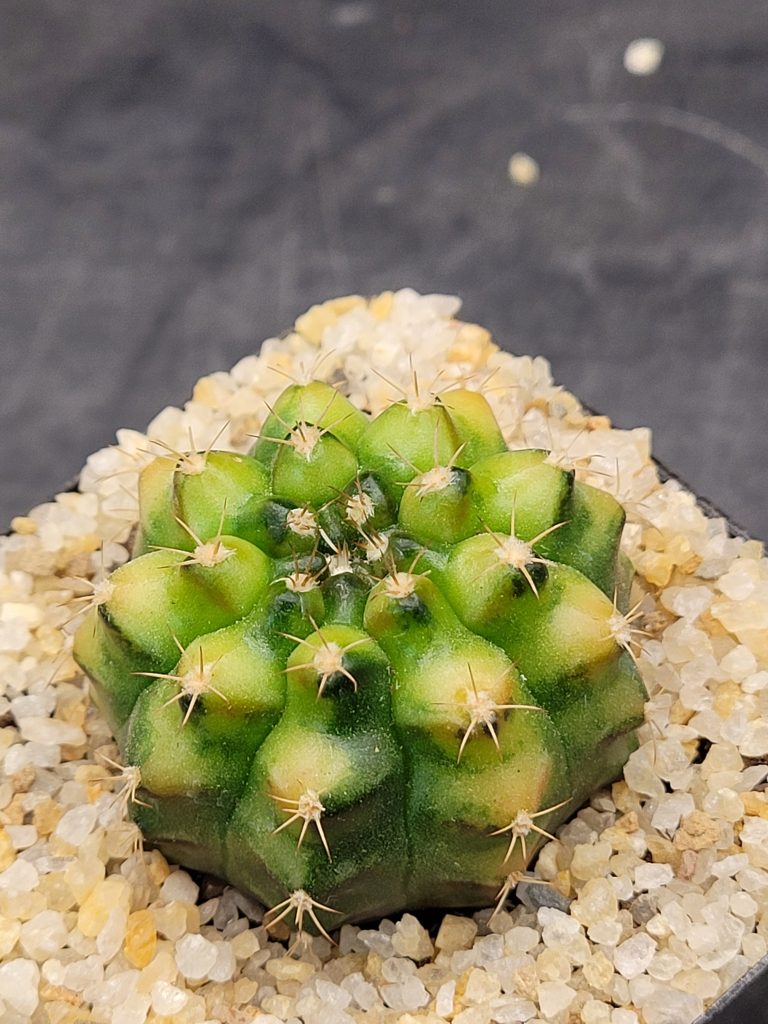
What Makes the ‘Nepali Art Clone’ Unique?
Unlike the typical smooth-bodied Gymnocalycium mihanovichii, the Nepali Art Clone features a bumpy, almost segmented body that gives it an architectural appearance. Its bright green coloration is accentuated by yellowish highlights, making it appear as if it were hand-painted—hence the name “Nepali Art.”
Key Features:
- Distinctive Tuberculated Ridges – Unlike the smooth ribs of other Gymnocalycium varieties, this clone develops raised, swollen tubercles, creating a textured, almost geometric aesthetic.
- Vivid Green with Subtle Yellow Highlights – The vibrant emerald green body contrasts with lighter yellow tinges near the tips of the tubercles, giving the cactus a multi-dimensional look.
- Fine, Needle-Like Spines – Short, sharp white-to-light brown spines emerge from fuzzy white areoles, enhancing the plant’s intricate detail.
- Compact Yet Sculptural Growth – This variety grows slowly and remains small (3-5 inches in diameter), making it perfect for pot displays or as a centerpiece in succulent arrangements.
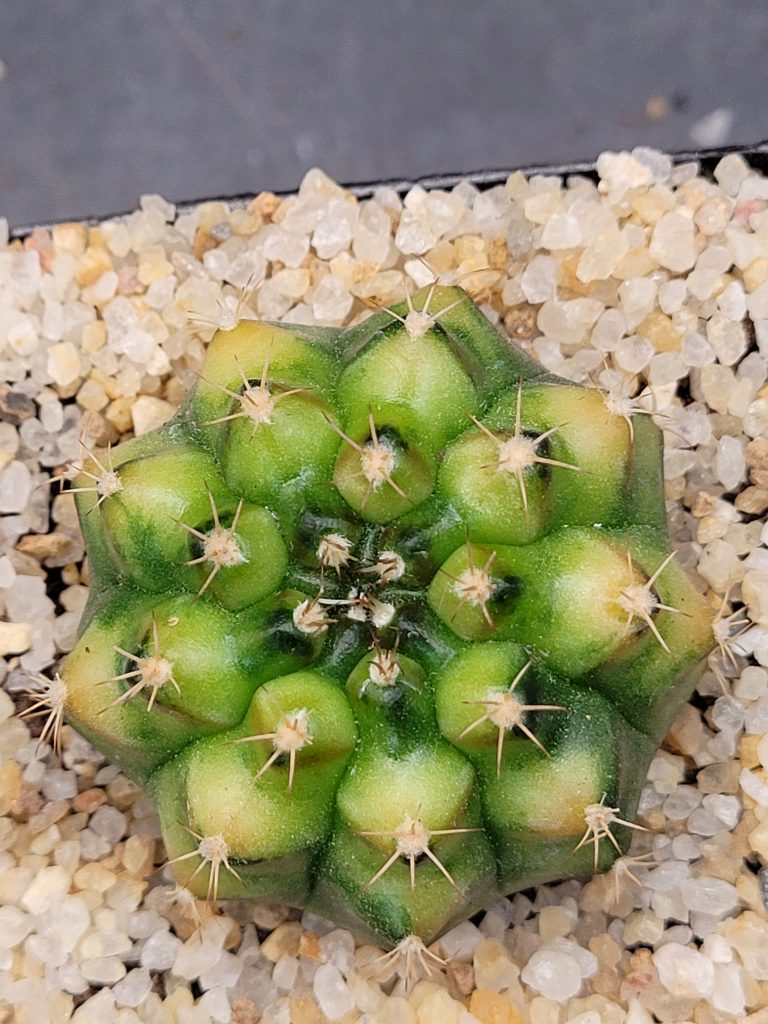
Flowering and Growth Patterns
The Gymnocalycium mihanovichii ‘Nepali Art Clone’ produces delicate pale pink or white flowers in the spring and summer, emerging from the top of its compact body. This floral display beautifully contrasts with its structured, sculpted appearance, adding to its ornamental appeal.
Due to its slow-growing nature, this plant thrives best under stable conditions with proper light, water, and soil management.
How to Care for Gymnocalycium Mihanovichii ‘Nepali Art Clone’
While visually intricate, this Gymnocalycium is relatively easy to care for with the right approach.
Light Requirements
- Prefers bright, indirect sunlight or filtered morning sun to maintain its vivid coloration.
- Avoid prolonged exposure to intense direct sun, which may cause scorching on the lighter tubercles.
- If grown indoors, place it near a south- or east-facing window for optimal light exposure.
Soil and Potting Mix
- Requires a well-draining cactus mix with added pumice, perlite, or sand to prevent root rot.
- A shallow terracotta pot is recommended for better aeration and moisture control.
Watering Routine
- Follow the “soak and dry” method:
- Water only when the soil is completely dry to prevent overwatering.
- Reduce watering during the winter months when the plant enters dormancy.
Temperature and Humidity
- Ideal temperature range: 65-85°F (18-29°C).
- Not frost-tolerant – If temperatures drop below 50°F (10°C), bring the plant indoors.
Fertilization
- Use a low-nitrogen cactus fertilizer once a month during the growing season (spring and summer) to promote healthy growth.
- Do not fertilize in winter, as the plant’s metabolism slows down.
Propagation
- Can be propagated through offsets (pups), though this particular clone grows slowly and may not produce many pups quickly.
- Grafting onto a Hylocereus rootstock can enhance growth speed and encourage larger offsets.
Why You Should Add the ‘Nepali Art Clone’ to Your Collection
The Gymnocalycium mihanovichii ‘Nepali Art Clone’ is a living sculpture—its textured ridges, bright green hues, and compact form make it an eye-catching centerpiece for any collection. Unlike traditional smooth-bodied Gymnocalyciums, this clone offers a unique, bumpy structure that mimics the careful detailing of hand-carved art.
Whether you are a seasoned collector or a beginner looking for a showpiece, the Nepali Art Clone is a must-have for those who appreciate the natural beauty of sculptural succulents.
With minimal care requirements and a striking aesthetic, this Gymnocalycium is a conversation starter that brings an artistic touch to any cactus collection.
